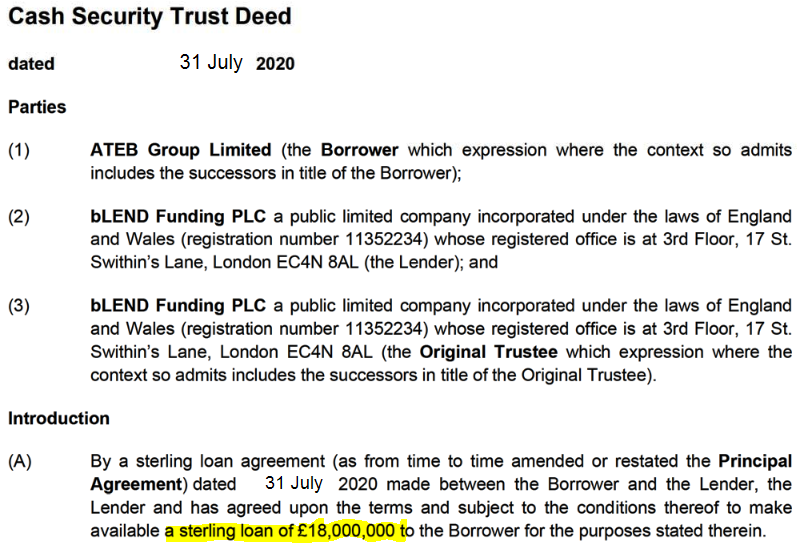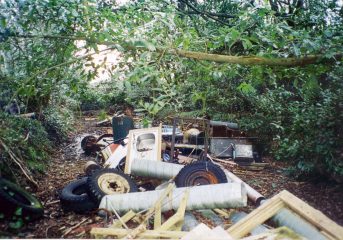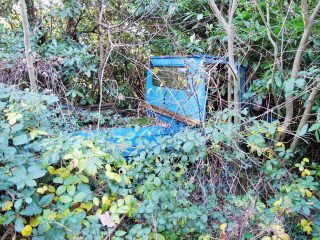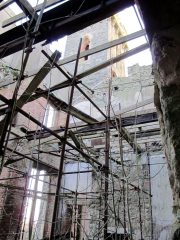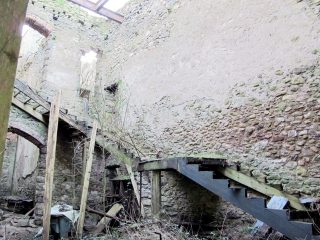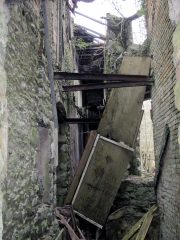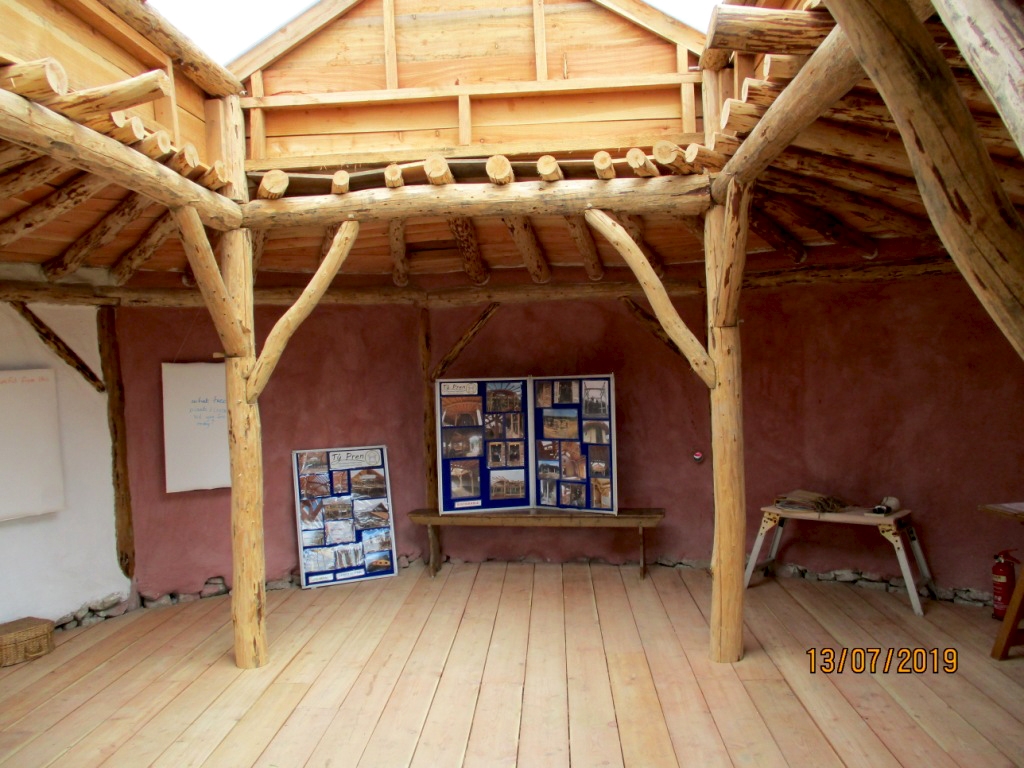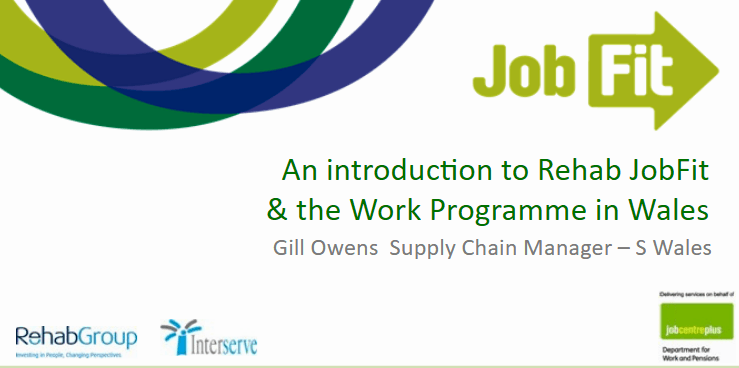PLEASE APPRECIATE THAT I GET SENT MORE INFORMATION AND LEADS THAN I CAN USE. I TRY TO RESPOND TO EVERYONE WHO CONTACTS ME BUT I CANNOT POSSIBLY USE EVERY BIT OF INFORMATION I’M SENT. DIOLCH YN FAWR
♦
![]() This is the roundup I promised last week before the Knighton piece just grow’d like Topsy and took over.
This is the roundup I promised last week before the Knighton piece just grow’d like Topsy and took over.
Here you’ll find updates on old favourites plus some new faces. Combined they’ll provide a sobering read and a reminder of what a mess Wales is in, due partly to useless, lying politicians down Corruption Bay.
♦
PLAS GLYNLLIFON
This fine old mansion that I’ve written about so many times in recent years in the Weep for Wales series has been sold. Also, the Seiont Manor.
At one time both were owned by Paul and Rowena Williams, but they ran into problems and soon had ‘partners’ in their hour of need. In the form of Myles Cunliffe and his oppo, the ‘King of Marbella’, Jon Disley, always looking for companies in trouble.
And now they’re all gone.

I look forward to learning the identity of the new owners, but I’m fairly sure that he / she / they will fall into one of the following categories. We can but hope that it’s the third.
- More crooks looking to use the Plas for nefarious purposes.
- Dreamers, with wonderful ideas but neither the ability nor the money to carry them out.
- Somebody, or some company, with both the right ideas and the money to realise them.
♦
TRANSPORT FOR WALES GOES OFF THE RAILS
You’ll remember that the Wales and Borders rail franchise was run for some years by Arriva Trains. There were many critics. So when the franchise came up for renewal a couple of years ago it was awarded to French-Spanish partnership KeolisAmey.
That didn’t work out either, with KeolisAmey being fined £3.2m in January for its poor service, with Covid adding more misery through falling passenger numbers. Now the rail service is being nationalised by the ‘Welsh Government’.
Despite my right of centre views on economic and other matters, I believe that essential services should be run by the state as national assets. With one condition, and that is that these services should be run by people who know what they’re doing.
That will not happen in Wales. The statist majority in Corruption Bay has taken over the railways not to provide a better service but because they’re control freaks. Don’t be surprised if the signalling system is handed over to a third sector body approved by lobbyists Deryn.
Unbeknownst to most of those who drive under Machynlleth’s railway bridge, there is a depot nearby where the trains from the Cambrian Coast and the Aberystwyth-Shrewsbury lines are brought overnight for cleaning, maintenance, and repair.
It’s a major employer in the town. (But perhaps not for much longer, thanks to Transport for Wales. An issue I might return to in a later post.)
Two men have been hanging around Mach’ railway station for a few weeks. For a while, no one knew who they were, or what they were doing. I think I now have the story.
As part of the Covid-19 arrangements extra portakabins were brought in for the staff. Hired from a company called W H Welfare, part of the Kelling Group of Normanton, in West Yorkshire, a few miles south east of Leeds.
The two mystery men are security guards who came with the portakabins. The problem being that the portakabins are inside the compound, behind the security gate, and the portakabin guards do have not have clearance to enter the compound. So they’re stuck outside, and to look useful, or just to while away the time, they seem to turn up to meet the trains.
But Machynlleth ain’t Grand Central Station. So that doesn’t give them much to do.
Now these two security men must be staying locally, which means that their wages and accommodation will be included in the portakabin hire charge.
The incompetence doesn’t end there. The portakabins run on a generator – a petrol generator. There is no petrol on site except in the workers’ cars. Everything else is diesel.
Am I making this up? No. Am I drunk? How dare you!
So, we have two men at a small Welsh railway station, doing sod all, but costing a lot of money. Because of course it’s all being paid for by Transport for Wales. Which means the ‘Welsh Government’. Which means you and me.
It’s reasonable to assume that Machynlleth isn’t the only station or depot for which these portakabins were hired. Plus of course the security men. So how much money is being squandered in this way?
And come to that, is there nowhere in Wales where portakabins could have been sourced? And sourced cheaper? I’m sure there is. Which means that in addition to the incompetence we have the issue of a ‘Welsh Government’ agency sending money out of Wales.
It looks as if someone in Transport for Wales has made a massive cock-up. Or is someone getting a backhander from a firm in West Yorkshire?
♦
MARGAM MOUNTAIN
Last month I brought you the tale of yet another foreign-owned windfarm being dumped on Wales with the enthusiastic support of the planet-savers in the ‘Welsh Government’ and Plaid Cymru.
You’ll find it here, just scroll down to the section, “Another ‘Community-owned, local benefits’ wind farm. Not”.

As I wrote in that earlier piece, “this particular project is a joint English-Irish venture. From Ireland we have state-owned ESB, while from England (possibly Scotland) we have Coriolis Energy Ltd.”
As you can see from the link, the website is very basic, perhaps explained by the fact that Companies House tells us Coriolis Energy is almost £100,000 in debt.
It’s difficult to figure out why ESB needs Coriolis. Maybe it’s to fulfil a similar role to that of Invis Energy of County Cork, which has been working on Meenbog wind farm, on the Donegal-Tyrone border.
Where there was recently a massive slippage of peat into the Mourne Beg river, part of the Foyle system. Just watch the trees go sailing by in the video!
The lesson here is that erecting bloody big wind turbines, each one sunk into thousands of tons of concrete, will have consequences when such idiocy is encouraged in sensitive environments.
Such as Irish peat bogs, and Welsh hillsides from which thousands upon thousands of rain-absorbing trees have been cut, and from which acres of equally absorbent peat has been removed.
Another worry for those living close to the proposed development on Mynydd Margam is that the planned turbines will be 750 tall. As any child playing with blocks will tell you, the higher you try to build it, the more difficult it gets to keep it standing.
Which is why I was not surprised to learn from a regular correspondent in northern Sweden – who took time off from herding his reindeer – that a 755 foot turbine in his neck of the woods had recently come crashing down. Here’s a report from ABC News.
I believe a re-think is needed. Not just on this development on Margam Mountain but on all onshore wind developments in Wales. Because . . .
- No permanent jobs have resulted from the dozens of wind farms desecrating our countryside.
- No manufacturing has been encouraged by the ‘Welsh Government’ so that we can build the turbines here – they’ve all been imported.
- First by smoky ships, and then by huge, diesel-powered trucks and trailers, before trees are felled and peat removed to accommodate them in concrete bases the size of football pitches. Making a nonsense of wind turbines’ claimed green credentials.
- In fact, before a blade turns, each wind turbine will have caused more damage to the environment than it can make up for in its short and fitful life.
- No Welsh companies have emerged to run or own wind turbines other than tiny, ‘hippy’ enterprises reliant on public largesse.
- No skills base has been developed that Wales could benefit from and export.
- And it’s increasingly likely that wind turbines contribute to flooding.
The ‘progressive’ parties have allowed – even encouraged – Wales to be exploited and cheated in this way just so that they could look virtuous to a certain lobby.
When it comes to serving England’s interests, things in Wales are not a lot different in the 21st century to earlier times. Just disguised by the gloss of devolution, and bullshit about ‘Wales saving the planet’.
But it’s the same old exploitation.
♦
BRYN LLYS
Where would a roundup like this be without a trip to Bryn Llys or, more specifically, Caernarfon magistrates court.
The latest of the Duggan gang to appear has been Jon Duggan himself, on November 16. His large dogs got out – again! – and attacked neighbours’ poultry. But of course, in the parallel universe inhabited by these clowns, it was probably the chickens’ fault.
I’m afraid I can’t link to any press report because I can’t find one. But Duggan was fined £300. Then there was compensation of £30, victim surcharge of £32, and CPS costs of £640. Making a grand total of £1,002.00.
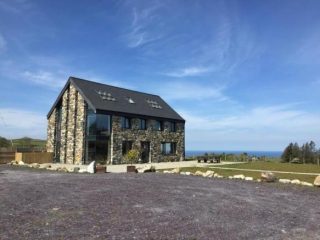
I know those are the facts because my source is reliable, and I have even been supplied with a case number.
In related news, Bryn Llys Ltd is threatened with strike-off by Companies House. Though I suppose this company might have already served its purpose.
By which I mean the Duggan gang’s MO is to start a company, open bank accounts, sign up for credit accounts with assorted suppliers and then order goods and equipment, sell it all on, then let the company be struck off, or liquidate it, without paying for anything.
Finally, the deadline for Duggan to comply with the Enforcement Order and remove the unauthorised roadway he has laid on his recently acquired land was Friday, November 20. He has of course made no effort to comply. Cyngor Gwynedd has been informed.
This episode was covered in September, in ‘Bryn Llys, the Liverpool connection‘. That Liverpool connection was solicitor Kathryn Elizabeth Parry. She’d had her own company, Parry and Co Solicitors Limited, since liquidated; and now she’s a partner in a company formed in October last year, Victor Welsh Legal Limited.
A dicky-bird tells me that when Duggan appeared before the bench to answer for the Great Chicken Massacre he was accompanied by a female solicitor from Liverpool.
Fancy that!
♦
COMPANIES HOUSE
Over the years I’ve complained about Companies House being toothless, nothing more than a filing system, or a box-ticking exercise. Here’s a recent example that came to my attention in a roundabout sort of way.
Someone got in touch because they were angry at certain new properties in Llanarthne, a village just off the A40, roughly midway between Llandeilo and Carmarthen. These were four- and five-bed ‘executive homes’ in the Mulberry Grove development.
The development’s name, and the prices being asked, suggested that the developer was not anticipating many local buyers.

The company behind it was GS6, formed as recently as May 2018. The project had been funded, in part at least, by Emma Ruth Developments Limited. And it’s when I looked at this company that I got a bit of a shock.
The last accounts filed were for year ending 30 October 2016! And these showed a net book value of just £949.00.
Companies House made the gesture of compulsory strike-off towards the end of 2018, but it was discontinued after an objection. But in 2019 – nothing! And nothing in 2020 until I contacted them. The company is now scheduled for strike-off to begin December 1st.
The response I got a few days ago reads:
“I can advise that the company has already been reminded accordingly to deliver the outstanding accounts in accordance with the Companies Act 2006.
Our records show that accounts for the period ending 30/10/2017, 30/10/2018 and 30/10/2019 and also the confirmation statement for the period ending 14/06/2020 remain overdue and we are currently taking action to remove the company from the register.
In order to proceed with this course of action it is necessary to issue statutory letters to the company leading to a publication in the London Gazette.
Any objections against the proposed dissolution will be considered once the notice of our intention has been published in the London Gazette. All creditors and interested parties should be aware that objection must be in writing and need to be provided with supporting evidence.
Also, if you believe that the company or any of its employees have acted fraudulently then this matter should be reported to Investigation and Enforcement Services. The Company Investigations team within the Insolvency Service has the power to investigate limited companies where information received suggests corporate abuse; this may include serious misconduct, fraud, scams or sharp practice in the way a company operates. They have investigatory powers to look into the affairs of a company where this is evidence of fraud or misfeasance and can be contacted at
Intelligence.live@insolvency.gsi.gov.uk”
I’m not sure if Emma Ruth Developments has acted fraudulently but I’d like to know how a company that shouldn’t even be in existence is allowed to lend money to another company.
I might also ask why Companies House has done sod all for so long . . . but I’d be wasting my time.
♦
KNIGHTON HOTEL
Last week we were in Knighton, reading about a bunch of selfless people on a civilising mission. En passant I mentioned the Knighton Hotel, where once Paul Williams was cock o’ the walk . . . or something.
A source informs me that the old pile has been sold. And the new owner is Na’Ím Anís Paymán. A 26-year-old German citizen of German and Iranian Baha’i origins who grew up in Albania and studied at Cambridge. More in this brief autobiography.

In fact, he seems to be quite the self-publicist, with a number of videos online. But he still comes across as a likeable young man.
Paymán has formed a number of companies since 2015 and I have no reason to suspect that he’s anything other than a genuine young entrepreneur looking to make himself rich. An ambition that causes me no sleepless nights.
In the hope that it riles lefties, I’ll say it again: a genuine young entrepreneur looking to make himself rich.
If he does that by providing work for local people, if he uses local companies, tradesmen and suppliers, then all well and good.
If he takes a wrong path, then I’m sure I’ll be writing about him again.
♦
RSL FUNDING
I recently gave you the figures for amounts of Social Housing Grant (SHG) received by our Registered Social Landlords, otherwise known as housing associations. Here’s a link to the table I put together. (Scroll left?)
In the ten years 2010-2011 to 2019-2020 the headline figure for SHG was £966,608,902. Obviously, some RSLs got more than others, and none got more than Labour’s favourite RSL, where the CEO is the wife of a Cardiff Labour councillor.
For Wales & West Housing was handed the princely sum of £99,483,507.
I have since received the figures for RSL funding in addition to SHG, for the period 01.01.2010 to 31.10.2020. The funding covered is: Housing Finance Grant, Affordable Housing Grant, Rent to Own, Physical Adaptation Grant, Innovative Housing Programme (grant and loan), Land for Housing Scheme (loan) and Registered Social Landlord Loans.
Eleven local authorities received a total of £19,969,000. While our RSLs were given £370,738,000. Once again, the big winner was Wales & West, with £39,341,000.
Combining the funding from various pots gives us £1,337,346,982. That is £1.34bn.
Of which Wales & West has received £138,824,507. Just over 10% of all the funding given to some 30 or more active RSLs.
♦
WHAT’S NEXT FOR MILFORD HAVEN?
The Milford Haven Waterway is one of the finest deep-water anchorages on Earth, and has been recognised as such for centuries. In recent times it has attracted oil and gas companies because their huge tankers can be easily accommodated.
The area also attracts its share of con men. Who can forget Admiral Wing Commander of the SAS Fabian Sean Lucien Faversham-Pullen VC, Croix de Guerre, Iron Cross (1st Class), Purple Heart and the Order of Lenin, who planned to turn Fort Hubberstone in Milford Haven into a home for ex-service personnel.
The Last Post was blown for Camp Valour CIC a year ago. Read about it here.
Hot on the heels of the Camp Valour project at Fort Hubberstone came a group of ‘investors’ looking to buy a different fort, The Old Defensible Barracks in Pembroke Dock. I wrote about that in Old Defensible Barracks, and the imaginatively titled sequel, Old Defensible Barracks 2.
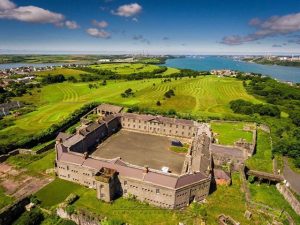
Those involved had not yet bought the Barracks when I first wrote about them, or certainly, the Land Registry had not been informed of a change of ownership. This has now been registered and we can see from the title document that the owners are Walker Property Developments Limited.
This company was launched 14.08.2018 as Muniment Yorkshire Ltd. It became Walker Property Developments 06.07.2019, before changing its name again 02.10.2019 to VR 1844 Limited.
I assume that VR stands for Victoria Regina and 1844 tells us that the Old Defensible Barracks was built in that year.
Despite the developers saying they planned to turn the old place into apartments (see the article below, and here in pdf format), I suspected that the real attraction was the closeness to the estuary, connecting with Brexit and the need for space to park lorries. Because there is an extensive piece of land between the Barracks and the water, clearly visible in the image above.

And of course, the Pembroke-Rosslare ferry is almost next door.
This suspicion was strengthened by the Singapore connection found with the directors of Walker Property Developments – including the eponymous Walker, who lives there – and Singaporean connections with another coastal site, in the Six Counties, and again, very close to ferry ports.
Lorry parks may still be the objective, but as I mentioned towards the end of the second article, there is also the possibilty of Milford Haven, or the whole Waterway, becoming a freeport. Which, again, could account for the interest from Singapore, which is perhaps the biggest freeport in the world.
Others have also been buying sections of the Waterway shoreline. With interest coming from equally exotic locations: Cyprus, Jordan . . . Carmarthenshire.
Let’s start in September 2015, with WalesOnline gilding a press release – no questions, no critical analysis. To believe the report, a company nobody’d heard of was going to bring 560 jobs to Milford Haven over the next five years through, “£685 million in a Centre of Renewable Energy Excellence”.
The company named in the fable was, “Cypriot-owned energy company” Egnedol Ltd. We were told it had bought the former Gulf refinery at Waterston and the neighbouring RNAD mine depot at Blackbridge.
The biomass facility planned for Blackbridge was turned down in June 2018.

There are a number of Egnedol companies, with the Blackbridge site owned by Egnedol Pembroke Eco Power Ltd, according to the Land Registry title document.
The old refinery site nearby appears to be owned by Egnedol Bio-Energy Limited. Certainly, that’s what the Land Registry document suggests.
I hedge my bets because there are caveats attaching to the ownership of both sites.
The Blackbridge site has received loans from Suleiman Al Daoud, of Amman, Jordan. Who in September became a director of Egnedol Wales Limited. So he could be said to now own the site. By the same token, he could also be said to own the oil refinery site.
UPDATE: I got to wondering about Suleiman Al Daoud. The Al Daoud Group is an established company that seems to concentrate on residential properties and retail complexes in Jordan.
I can’t find any evidence of the Group operating outside of Jordan. So what attracted Suleiman Al Daoud to Milford Haven?
Then there is yet another company, Egnedol UK Limited, which uses a Milford Haven address but with directors Dr Robert Prigmore and Steven Whitehouse living in the Ammanford area.
Prigmore and Whitehouse appear in the other Egnedol companies, together with Antonis Andrea Antoniadis, who maintains the Cyprus connection.

And if Cyprus and Jordan weren’t enough overseas involvement, Prigmore and Whitehouse have yet another company, Azolis UK Ltd, formed as recently as September this year, where we find two French directors.
Explained by the fact that this latest company is an offshoot or subsidiary of French renewables company Azolis, which has offices in Fontainebleau and Casablanca.
So, all this overseas interest in Milford Haven Waterway, what does it mean? What does the future hold? The possibilities appear to be:
- Brexit-related, possibly lorry parks.
- Hoping to cash in on the Swansea Bay City Deal.
- Anticipating a freeport and getting in ahead of the rush.
- A home for nuclear subs when Scotland goes independent.
One thing I guarantee. Whatever happens, it’ll be strangers reaping the benefits, as always. That’s the way Wales is run, and devolution has brought no improvement.
In fairness, the ‘Welsh Government’ may have no influence over what’s happening on the Milford Haven Waterway. It could all be planned at a higher level and those clowns might be told at a later date.
Then again, why bother!
♦ end ♦









